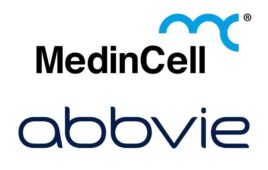To meet the public demand for new drug development and safety, FDA and international guidance help pharma companies assess risk during clinical trials
Mary Ellen Turner, MD, MPH
Turner is vice president of global safety surveillance, epidemiology, and labeling, Wyeth Research
Over the past few years, the bar has been raised on the part of the public regarding the safety of medications. While the public expects rapid approval of innovative, life-saving medications, there are also increased expectations regarding product safety. Recent high profile drug withdrawals and the resulting media attention, as well as spiraling product liability suits, have also added to the challenge of ensuring that a product’s risks are minimized while maximizing its benefits. At the same time, regulators worldwide have directed a significant shift in risk assessment from traditional postmarketing pharmacovigilance activities to earlier and more intensive study of safety during clinical development. They have also called for greater accountability in ensuring that drugs are used safely. In response, pharmaceutical companies have moved quickly to design and implement risk management planning processes. This article briefly reviews newer regulatory trends in this area and some of the steps that Wyeth has taken to meet these emerging challenges.
FDA risk management initiatives
 click the image to enlarge Agreeing upon a conceptual framework: Key elements compose the risk management capability (Source: Wyeth Research) |
Principles of risk management have been used in various industries for some time to identify and develop strategies to minimize various risks to businesses such as financial risks, risk of accidents, risks of project failure, and so forth. It wasn’t until the late 1990s that regulators began to formally study and apply these principles to the safety of medicines. In 1999, the US Food and Drug Administration (FDA) Risk Management Task Force published “Managing the Risks from Medical Product Use—Creating a Risk Management Framework” [Report to the FDA Commissioner from the Task Force on Risk Management, FDA, 1999]. The Task Force recommended that a systems framework should be applied to medical product risk management. This systems framework would be based on the principles of risk identification and assessment, risk confrontation, identification of options to manage risk, communication, and finally assessment of results, and would involve not only industry and regulators, but also health care professionals and patients. The ultimate goal would be to maximize the benefit of medications while minimizing risk.
Subsequently the FDA has incorporated Risk Management into the Prescription Drug User Fee Act III (PDUFA III) legislation, which became effective in 2002. As part of PDUFA III, funding is provided to FDA for dedicated risk management resources and it is stipulated that risk management plans may, on a voluntary basis, be a part of NDAs/BLAs submitted to the agency. In May 2004, three draft guidance documents: Premarketing Risk Assessment [FDA, May 4, 2004], Development and Use of Risk Minimization Action Plans [FDA, May 4, 2004] and Good Pharmacovigilance Practices and Pharmaceopidemiologic Assessment [FDA, May 4, 2004] were issued by the agency to provide guidance to the industry.
In these documents, the FDA discusses ways to better identify and assess risk during drug development (such as a larger safety database, use of a diverse patient population, study of multiple drug doses, and long-term safety studies). The agency also discusses possible ways to ensure that medications are prescribed and used correctly by use of Risk Minimization Action Plans (Risk MAPs) that include education programs, reminder systems, and performance-linked access system tools. It should be stressed that the majority of products will require nothing above and beyond the routine use of FDA approved professional labeling. For a small number of products with safety concerns, Risk MAPs should be developed to minimize risk
These proposals have generated heated discussion by many stakeholders, including industry sponsors who have concerns that these measures may slow the drug development process and prevent access to life-saving medications. The FDA has stressed that risk management strategies and activities, both in the development, and postmarketing phases should be tailored to the specific drug, target population, and known and potential risks, and that communication with the agency is essential.
Risk initiatives—ICHE2E
On a more global basis, the draft guidance ICH E2E: Pharmacovigilance Planning (PvP) [Draft version 4.1. (November 11, 2003)] has been released for comment by interested parties. This document has some of the same themes as the FDA guidance documents. However, there is more emphasis and discussion of pharmacovigilance activities. The guidance is intended to aid industry and regulators in planning pharmacovigilance activities in preparation for the early postmarketing period of a new drug. The guidance describes a method for summarizing the identified risks of a drug, the potential for important unidentified risks, and populations that could potentially be at risk that have not been studied in the development phase. There is a proposed structure for a pharmacovigilance plan and principles for the design of postmarketing observational studies. The guideline stresses the use of pharmacovigilance and pharmacoepidemiology studies. Unlike the FDA guidances, the ICH draft guidance contains no recommended risk management tools.
The challenge to industry
In order to respond to emerging risk management initiatives from the United States and Europe, pharmaceutical companies have been working to develop processes and procedures that will meet these requirements. Because these initiatives are in the draft guidance stage and could change over time, sponsors must develop broad-based programs that are flexible enough to satisfy final guidances and regulations on a global basis.
 click the image to enlarge Design of an end-to-end risk management process is critical toward optimizing the safe use of products. (Source: Wyeth Research) |
While global initiatives may vary, there are some common themes. The definition of risk management includes the early identification, assessment, communication, and management of risk in order to maximize benefit and minimize risk to patients. There is a shift to earlier identification and study of safety issues during the development phase and earlier planning of risk management/pharmacovigilance activities after launch and during the product’s life cycle. There is greater emphasis on the use of pharmacoepidemiology studies to characterize patient populations and study risk, both during the development phase and after launch. There is also a call for more rigorous assessment of the success of risk management interventions. These themes represent the evolution of drug safety activities from basic compliance, to proactive identification and management of safety issues, to the new strategic world of pharmaceutical risk management.
Wyeth’s risk management
At Wyeth, senior management endorsed the plan to design and implement a comprehensive risk management program across the business. The vision of this project was to optimize the safe use of Wyeth drugs and to optimize the benefit/risk balance throughout a product’s life cycle. The ultimate outcome was to achieve clear, efficient, and compliant risk management processes with clearly defined roles, responsibilities, and accountability.
In order to gain consensus and create a framework for a company risk management process, a multidisciplinary team was formed consisting of representatives from all R&D functions including drug safety and metabolism, clinical pharmacology, and clinical research, as well as representatives from global safety, epidemiology, regulatory affairs, and legal. The team met to review the existing guidance documents and develop a strategy to address emerging regulatory requirements. The following concepts became the foundation of Wyeth’s risk management program:
• All products should have a risk management plan. For most products, the basic plan would be the approved product label as well as routine pharmacovigilance activities.
• Risk management planning should start early in development
• Risk management activities should leverage and build on existing processes such as quarterly safety review for development compounds and periodic review of post marketed safety data for marketed products.
• There should be a discussion of risk management planning in development milestone documents, and existing milestone decision points would be used to present risk management planning to senior management for approval.
• Wyeth’s epidemiology department would be key players in the development of risk management plans.
• Wyeth’s department of global safety surveillance and epidemiology would own and manage the risk management process.
There were already processes in place at Wyeth relevant to risk management planning such as the periodic safety review process, milestone decision points, and documents produced for senior management review that presented updates of efficacy and safety information as well as development strategies. There were also many other sources of information that could be used for risk management planning. The challenge was to develop a process that would collect and update relevant risk information and put it in one place for review and decision-making. The team collected information about these processes and documents and developed a process that would support the following capabilities:
• Program planning—Proactive identification of product priority, data requirements, timelines, milestones, stakeholders, and action planning that enables an effective management of potential safety related product risks.
• Risk identification—Rigorous analysis of safety data that enables recognition of safety signals, concerns, and product contraindications.
• Options development—Evaluation of safety risk data, product efficacy data, and health outcomes data to develop risk scenarios and generate options for appropriate product positioning.
• Risk mitigation—Proactive deployment of interventions to achieve a reduced level of product related adverse events.
• Measures and evaluation—Evaluation of effectiveness of risk mitigation efforts based on outcomes measures.
• Relationship management—Effective interaction, collaboration, and/or partnering with external stakeholders that supports the realization of risk management goals.
• Engage and communicate—Effective interaction, collaboration, and partnering with internal stakeholders that supports the realization of risk management goals.
The Wyeth risk management planning process starts early in drug development with collection of data designed to build safety risk awareness. These data include any known safety information about the compound or related compounds, background information about the natural history of the targeted disease, characteristics of the target population, and exposure assessment. As the compound moves through development, additional information from clinical trials is generated. At critical milestones, this information is summarized and included in documents for review by senior management. Toward the end of phase III trials, the project team reviews all of the safety/risk information from the development program and formulates a risk management plan that will be reviewed and approved by senior management and considered for submission to regulatory agencies. Under this new process, all Wyeth products will have a risk management plan by the end of development that will consider known and potential risks and will recommend strategies to study or manage these risks. For the majority of drugs, this plan will be based on good pharmacovigilance practices and communication of risks via the approved product label. The rationale for this plan will be based on scientific data and should reassure all stakeholders that all aspects of risk have been studied and considered.
Since this process has been approved and put in place, standard operating procedures have been written and implemented, personnel have been trained, and communication about the importance of this new initiative has taken place. The key to the success of this initiative has been vision and commitment of Wyeth’s senior management; the establishment of a clear, efficient process; the leveraging of existing processes; communication across functions; and training of key personnel.
Increased expectations on the part of the public as well as emerging regulatory trends that emphasize a scientific, strategic approach to management of safety/risk information present new challenges to the pharmaceutical industry. In order to meet these challenges, it will be necessary for the pharmaceutical industry to establish best processes and practices for risk management.
Filed Under: Drug Discovery



